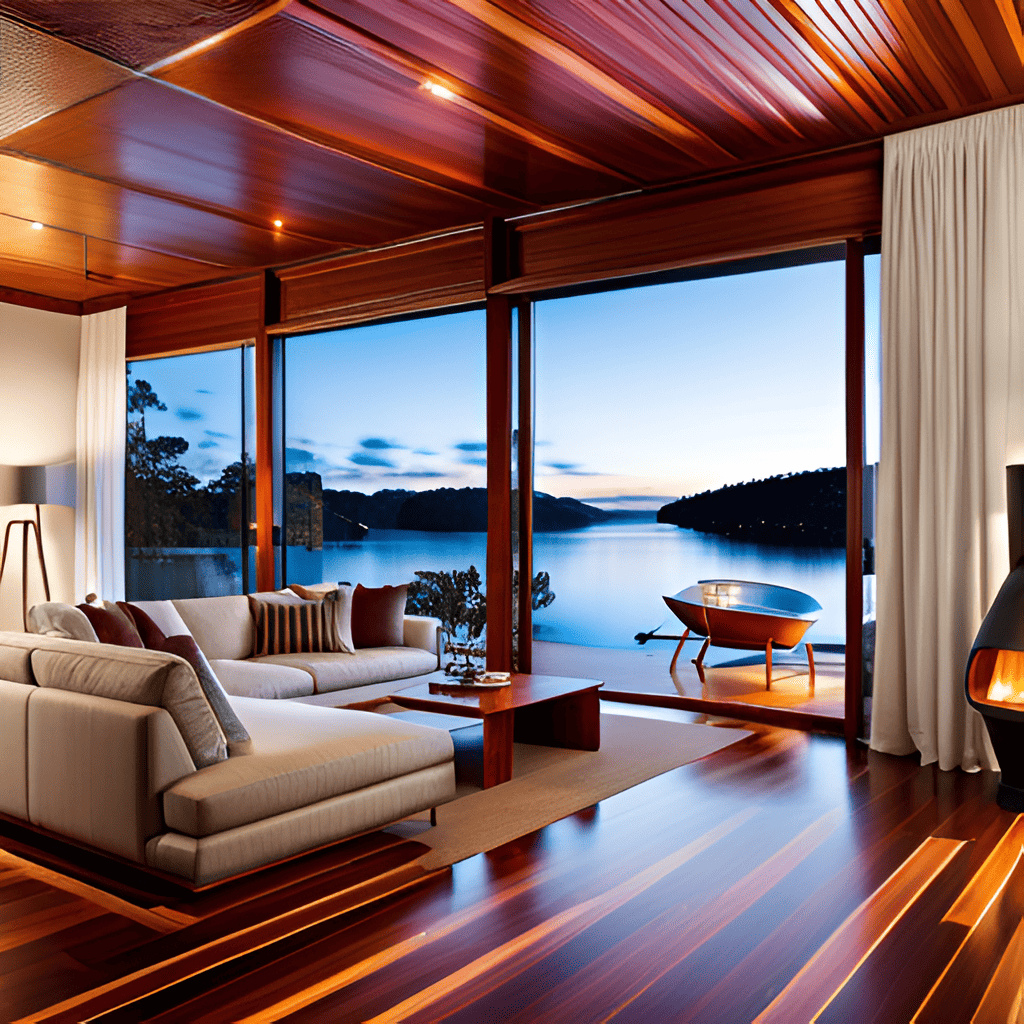Jarrah wood, a native Australian hardwood from the Eucalyptus marginata species, is highly valued for its durability, strength, and attractive appearance. It finds a wide range of applications in various industries.
While it can be difficult to source Jarrah outside Australia, we’ll discuss benefits of using it in various applications and also discuss some alternatives just in case!
Jarrah Has Numerous Commercial Applications
Some common uses of Jarrah wood include:
- Flooring: Jarrah is a popular choice for hardwood flooring due to its rich reddish-brown color and distinctive grain patterns. It adds warmth and character to interior spaces.
- Decking: Jarrah is frequently used for outdoor decking, as its natural resistance to weathering and decay makes it an excellent choice for creating long-lasting, beautiful decks.
- Furniture: The strength and durability of Jarrah make it a preferred material for furniture, including tables, chairs, cabinets, and outdoor furniture.
- Joinery and Cabinetry: Jarrah is a popular choice for joinery work, such as doors, windows, and cabinetry, providing a stunning and functional finish.
- Cladding and Siding: Due to its natural resistance to weathering, Jarrah is used for exterior cladding and siding, adding both aesthetic appeal and protection to buildings.
- Boat Building: Jarrah’s natural resistance to water and marine borers makes it suitable for boat building, particularly for marine applications like boat decks and hulls.
- Outdoor Structures: Jarrah is used in the construction of outdoor structures, such as pergolas, gazebos, and verandas, due to its strength and ability to withstand outdoor conditions.
- Poles and Beams: Jarrah is utilized for structural purposes, such as poles, beams, and railway sleepers, where its strength and durability are essential.
- Turning and Carving: The workability of Jarrah makes it suitable for woodturning and carving projects, allowing craftsmen to create intricate and detailed pieces.
- Industrial Applications: Jarrah may be used in various industrial settings, such as mining props and heavy construction, where its robustness and load-bearing capabilities are advantageous.
These diverse applications highlight the versatility and value of Jarrah wood, making it a prized material in the construction, woodworking, and design industries, both in Australia and internationally.
Jarrah Wood Facts And Tree Characteristics
| Facts about Jarrah Wood from Australia | Description |
|---|---|
| Tree Species | Eucalyptus marginata |
| Tree Height | Up to 40 meters (131 feet) |
| Trunk Diameter | Typically 1 to 1.5 meters (3.3 to 4.9 feet) |
| Growth Environment | Native to southwestern Australia, grows in forests with well-drained soils and Mediterranean climate |
| Wood Grain | Straight to interlocked grain, moderately coarse |
| Color | Rich reddish-brown to deep burgundy |
| Density | High-density hardwood, heavy |
| Durability | Highly durable, naturally resistant to decay, termites, and marine borers |
| Workability | Generally easy to work with, responds well to machining and finishing |
| Common Uses | Flooring, decking, furniture, joinery, boat building, outdoor structures, poles, turning, and carving |

Alternatives For Jarrah Wood When You Can’t Source It
While Jarrah wood possesses unique qualities that make it highly desirable for various applications, several alternative woods can serve as substitutes with similar characteristics and appearances. Some suitable substitutes for Jarrah wood include:
- Merbau (Intsia bijuga): Also known as Kwila, Merbau shares similar rich reddish-brown color and durability, making it an excellent substitute for Jarrah in decking and outdoor applications.
- Red Balau (Shorea spp.): Red Balau is another hardwood that exhibits reddish-brown hues and comparable durability to Jarrah, suitable for decking, outdoor furniture, and siding.
- Sapele (Entandrophragma cylindricum): Sapele features an attractive reddish-brown color and interlocked grain pattern, making it a viable alternative for flooring, cabinetry, and fine furniture.
- Ipe (Tabebuia spp.): Ipe, often called Brazilian Walnut, offers a deep reddish-brown color and outstanding durability, making it suitable for decking and outdoor construction.
- Cumaru (Dipteryx spp.): Cumaru showcases a reddish-brown to dark brown hue and exceptional hardness, making it a viable substitute for outdoor decking and heavy-use applications.
- Karri (Eucalyptus diversicolor): A native Australian hardwood, Karri shares some similarities with Jarrah, including a deep red color and suitability for decking, flooring, and outdoor structures.
- Ironbark (Eucalyptus spp.): Several species of Eucalyptus, such as Red Ironbark or Grey Ironbark, offer durable and dense wood with hues ranging from red-brown to dark brown, suitable for various construction and outdoor applications.
- Blackbutt (Eucalyptus pilularis): Blackbutt features a light to honey-brown color and similar durability, making it a substitute for flooring, cladding, and decking.
It is essential to consider the specific properties and suitability of each substitute for your intended application, as the appearance, workability, and availability of these woods may vary.
Consulting with wood experts or suppliers can help in choosing the best alternative wood that meets your project requirements and preferences.
Final Thoughts
Jarrah wood, sourced from Eucalyptus marginata trees native to southwestern Australia, is renowned for its strength, durability, and attractive reddish-brown to burgundy color. The tree can reach heights of up to 40 meters (131 feet) with trunk diameters typically ranging from 1 to 1.5 meters (3.3 to 4.9 feet).
Its high-density hardwood and resistance to decay, termites, and marine borers make it ideal for numerous applications, including flooring, decking, furniture, joinery, boat building, outdoor structures, poles, turning, and carving. With its versatility and striking appearance, Jarrah wood remains a prized choice in the construction and woodworking industries.

